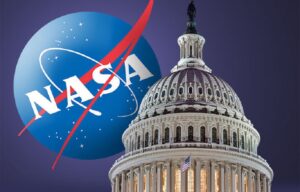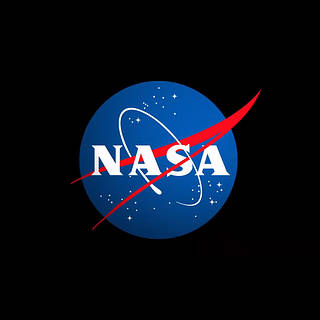NASA adds 2 helicopters to mission to bring Mars samples back to Earth
Friday, 29 July 2022 10:11 NASA officials have changed the agency's plans for its daring and complicated effort to bring actual samples of Mars back to Earth by adding two helicopters and ditching the idea of landing a "fetch rover."
In a joint project with the European Space Agency, NASA has a goal of returning Martian samples back to Earth by 2033. The rover Perseverance is already on the Red Planet with the ch
NASA officials have changed the agency's plans for its daring and complicated effort to bring actual samples of Mars back to Earth by adding two helicopters and ditching the idea of landing a "fetch rover."
In a joint project with the European Space Agency, NASA has a goal of returning Martian samples back to Earth by 2033. The rover Perseverance is already on the Red Planet with the ch Terran Orbital concludes TCM-2 for CAPSTONE
Friday, 29 July 2022 10:11 erran Orbital Corporation (NYSE: LLAP), a global leader in satellite solutions, primarily serving the United States and Allied aerospace and defense industries, has announced the successful execution of CAPSTONE's TCM-2 burn. The burn occurred in two parts with final success declared on July 26 at 1:45 UTC.
As with TCM 1-a and TCM 1-c, this burn confirms the NASA satellite will maintain th
erran Orbital Corporation (NYSE: LLAP), a global leader in satellite solutions, primarily serving the United States and Allied aerospace and defense industries, has announced the successful execution of CAPSTONE's TCM-2 burn. The burn occurred in two parts with final success declared on July 26 at 1:45 UTC.
As with TCM 1-a and TCM 1-c, this burn confirms the NASA satellite will maintain th Rocket Lab to supply solar power for US Space Force missile warning satellites
Friday, 29 July 2022 10:11 Rocket Lab USA, Inc. (Nasdaq: RKLB) ("Rocket Lab" or "the Company"), a leading launch and space systems company, announced that its high-efficiency, radiation-hardened Coverglass Interconnected solar Cell (CIC) assemblies will power the three Lockheed Martin Next Gen OPIR GEO (NGG) satellites for the United States Space Force (USSF).
The NGG program will deliver resilient global missile wa
Rocket Lab USA, Inc. (Nasdaq: RKLB) ("Rocket Lab" or "the Company"), a leading launch and space systems company, announced that its high-efficiency, radiation-hardened Coverglass Interconnected solar Cell (CIC) assemblies will power the three Lockheed Martin Next Gen OPIR GEO (NGG) satellites for the United States Space Force (USSF).
The NGG program will deliver resilient global missile wa SES and AXESS Networks to enable smart mining with O3b mPOWER
Friday, 29 July 2022 10:11 SES and AXESS Networks (AXESS), a leading provider of satellite connectivity solutions, are accelerating digital transition of the mining industry with SES's second-generation medium earth orbit (MEO) system O3b mPOWER, the two companies announced Wednesday. Under this multi-year, multi-million agreement, the mining sector users will be able to benefit from the cutting-edge low-latency Onshore E
SES and AXESS Networks (AXESS), a leading provider of satellite connectivity solutions, are accelerating digital transition of the mining industry with SES's second-generation medium earth orbit (MEO) system O3b mPOWER, the two companies announced Wednesday. Under this multi-year, multi-million agreement, the mining sector users will be able to benefit from the cutting-edge low-latency Onshore E Researchers 3D print sensors for satellites
Friday, 29 July 2022 10:11 MIT scientists have created the first completely digitally manufactured plasma sensors for orbiting spacecraft. These plasma sensors, also known as retarding potential analyzers (RPAs), are used by satellites to determine the chemical composition and ion energy distribution of the atmosphere.
The 3D-printed and laser-cut hardware performed as well as state-of-the-art semiconductor plasma s
MIT scientists have created the first completely digitally manufactured plasma sensors for orbiting spacecraft. These plasma sensors, also known as retarding potential analyzers (RPAs), are used by satellites to determine the chemical composition and ion energy distribution of the atmosphere.
The 3D-printed and laser-cut hardware performed as well as state-of-the-art semiconductor plasma s Airbus to deliver connectivity services using its leading Zephyr High Altitude Platform Station
Friday, 29 July 2022 10:11 Airbus has launched a connectivity services business through the creation of a dedicated HAPS Services Business based around Zephyr, Airbus' leading HAPS technology platform. This will help enable it to industrialise rapidly and begin serving a substantial total addressable market, providing low-latency connectivity services from the stratosphere for telecommunications and Earth observation appl
Airbus has launched a connectivity services business through the creation of a dedicated HAPS Services Business based around Zephyr, Airbus' leading HAPS technology platform. This will help enable it to industrialise rapidly and begin serving a substantial total addressable market, providing low-latency connectivity services from the stratosphere for telecommunications and Earth observation appl Low-speed wind tunnel test provides important data
Friday, 29 July 2022 10:11 Before NASA's quiet supersonic X-59 aircraft can take to the skies, plenty of testing needs to happen to ensure a safe first flight. One part of this safety check is to analyze data collected for the X-59's flight control system through low-speed wind tunnel tests.
The X-59 is central to NASA's Quesst mission to expand supersonic flight and provide regulators with data to help change exist
Before NASA's quiet supersonic X-59 aircraft can take to the skies, plenty of testing needs to happen to ensure a safe first flight. One part of this safety check is to analyze data collected for the X-59's flight control system through low-speed wind tunnel tests.
The X-59 is central to NASA's Quesst mission to expand supersonic flight and provide regulators with data to help change exist NASA awards contracts for NOAA GeoXO Spacecraft Phase A Study
Friday, 29 July 2022 10:11 On behalf of the National Oceanic and Atmospheric Administration (NOAA), NASA has selected two firms for the Geostationary Extended Observations (GeoXO) Spacecraft Phase A Study. These contracted firms will help meet the objectives of NOAA's GeoXO Program.
The firms selected are Lockheed Martin Space of Littleton, Colorado, and Maxar Space LLC of Palo Alto, California. The total value of e
On behalf of the National Oceanic and Atmospheric Administration (NOAA), NASA has selected two firms for the Geostationary Extended Observations (GeoXO) Spacecraft Phase A Study. These contracted firms will help meet the objectives of NOAA's GeoXO Program.
The firms selected are Lockheed Martin Space of Littleton, Colorado, and Maxar Space LLC of Palo Alto, California. The total value of e Spire Global awarded NOAA contract to deliver space weather data
Friday, 29 July 2022 10:11 Spire Global, Inc. (NYSE: SPIR) ("Spire" or "the Company"), a leading global provider of space-based data, analytics and space services, has announced that it has been awarded a Commercial Weather Data Pilot (CWDP) space weather contract as part of the Commercial Data Program (CDP) issued by the National Oceanographic and Oceanic Administration (NOAA). Spire will provide near real-time radio occ
Spire Global, Inc. (NYSE: SPIR) ("Spire" or "the Company"), a leading global provider of space-based data, analytics and space services, has announced that it has been awarded a Commercial Weather Data Pilot (CWDP) space weather contract as part of the Commercial Data Program (CDP) issued by the National Oceanographic and Oceanic Administration (NOAA). Spire will provide near real-time radio occ Lockheed Martin to support severe weather and climate monitoring for NOAA
Friday, 29 July 2022 10:11 Lockheed Martin [NYSE: LMT] was selected by the National Aeronautics and Space Administration (NASA) to further refine concepts for a critical instrument and the spacecraft bus for the National Oceanic and Atmospheric Administration's (NOAA) GeoXO weather satellites, the next generation after the Geostationary Operational Environmental Satellites - R (GOES-R) series. These future satellites will
Lockheed Martin [NYSE: LMT] was selected by the National Aeronautics and Space Administration (NASA) to further refine concepts for a critical instrument and the spacecraft bus for the National Oceanic and Atmospheric Administration's (NOAA) GeoXO weather satellites, the next generation after the Geostationary Operational Environmental Satellites - R (GOES-R) series. These future satellites will China launches six new satellites
Friday, 29 July 2022 10:11 China on Wednesday sent six new satellites into space from the Jiuquan Satellite Launch Center in northwest China.
The satellites, including a new space technology test satellite and a test satellite for probing atmospheric density, were launched by a Lijian-1 carrier rocket at 12:12 p.m. Beijing Time and entered the orbit successfully.
The Lijian-1 solid-propellant rocket was indepe
China on Wednesday sent six new satellites into space from the Jiuquan Satellite Launch Center in northwest China.
The satellites, including a new space technology test satellite and a test satellite for probing atmospheric density, were launched by a Lijian-1 carrier rocket at 12:12 p.m. Beijing Time and entered the orbit successfully.
The Lijian-1 solid-propellant rocket was indepe Draft Senate appropriations bill matches overall NASA request for fiscal year 2023
Friday, 29 July 2022 09:37
A draft Senate appropriations bill released July 28 would fund NASA at the same overall level the agency requested, but with adjustments to some science, technology and exploration programs.
The post Draft Senate appropriations bill matches overall NASA request for fiscal year 2023 appeared first on SpaceNews.
NRO satellite upgrades delay the second of two back-to-back Rocket Lab launches
Thursday, 28 July 2022 23:22
Rocket Lab CEO Peter Beck: All the talk about responsive launch often ignores the reality that if satellites aren’t ready on time, they can’t take advantage of rapid launch capabilities
The post NRO satellite upgrades delay the second of two back-to-back Rocket Lab launches appeared first on SpaceNews.
Senate appropriators boost military space programs in proposed 2023 spending bill
Thursday, 28 July 2022 19:02
The Senate Appropriations Committee on July 28 unveiled 12 appropriations draft bills for the upcoming fiscal year, including a defense spending bill recommending $792 billion for the Defense Department.
The post Senate appropriators boost military space programs in proposed 2023 spending bill appeared first on SpaceNews.
NASA Administrator Statement on Agency Authorization Bill
Thursday, 28 July 2022 18:22 NASA Administrator Bill Nelson released this statement Thursday following approval by the U.S. Congress for the NASA Authorization Act of 2022, which is part of the Creating Helpful Incentives to Produce Semiconductors (CHIPS) Act of 2022.
NASA Administrator Bill Nelson released this statement Thursday following approval by the U.S. Congress for the NASA Authorization Act of 2022, which is part of the Creating Helpful Incentives to Produce Semiconductors (CHIPS) Act of 2022. 
